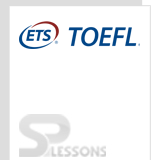 Introduction
Introduction
The TOEFL, is a test of academic English and is widely welcomed worldwide by more than 10,000 institutions in over 150 countries. TOEFL is prominently taken by students aspiring to study in United States, Canada, Australia, and New Zealand, UK & several other countries. TOEFL is accepted throughout all the universities in United States, Canada, Australia, and New Zealand and by over 98 percent of universities in the U.K., including 100 percent of Russell Group institutions. TOEFL is preferred over other English-language tests in the United States and key European destinations like France and Germany. TOEFL is widely popular among graduate admission officers in Canada. TOEFL is a fair and reliable test with 4 sections: Reading, Listening, Speaking & Writing. The TOEFL iBT® test measures the ability to use and understand English at the university level. the 4 sections in the TOEFL test are primary at the university level to perform academic tasks. TOEFL Reading Section, describes the nature of the Reading Section, along with some samples for practice.
 Elements
Elements
TOEFL Reading Section Scoring Strategies - Grading Elements
The following are the 7 elements which graders look for while grading the test takers essay.
-
✦ Clarity
✦ Structure
✦ Sentence Variety
✦ Vocabulary
✦ Language and Grammar
✦ Reasoning
✦ Evidence
 Reading
Reading
TOEFL Reading Section - Features
- Reading is the first section of The TOEFL iBT®. In the reading section, reading passages appear on the right side of the divided computer screen, and questions appear on the left side. Because passages are long it is necessary to scroll down to read an entire passage.
- The first question for a passage appears with the passage. In the reading section, test-taker can move forward through questions by clicking the Next button at the top of the screen and move back to previous questions by clicking the Back button at the top of the screen.
- The TOEFL iBT reading section includes a review function. Clicking the Review button at the top of the Screen takes test-taker to a review screen where he can see all the questions in the section and their status- answered, not answered, not yet seen.
- The reading section also has a glossary feature. A word in blue in a passage indicates that a definition is available for the word. Clicking on the word brings up this definition.
- A Help button in all the sections takes test-taker to a list of topics for which helpful explanations are available.
 Tips
Tips
1. Identify the question formats:
It is better to find out the question formats to answers the questions very quickly rather than to go with the new formats.
2. Identification of important words to answer the question easily:
If we observe the options carefully we will find some key words related to the questions.
3. Practice the reading passages with timer:
- In TOEFL exam we will get 60 minutes to complete the TOEFL Reading section. Reading 2100 words and answering 40 questions in 60 minutes is tough.
- It’s a good practice to time yourself while you do TOEFL Reading Practice questions. Simply set a timer on your computer or phone. You can start by timing yourself to see how long it takes you to complete each question.



